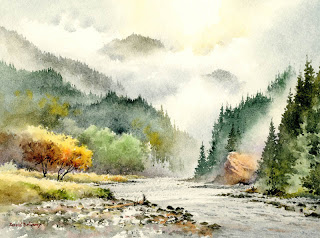Most of the time I find there is too much action happening and not enough talking – it’s great fun, but leaves little time for communicating, and there is not enough room in this blog to cover everything. I’ll have to leave my sketching adventures in Snowdonia of last week for the next blog.
On Sunday in Aberedw we had an event to raise money for the Ukrainian refugees. We are only a tiny village but we raised over £1,000 and will be trying to get another event organised soon in which I hope to be able to sell paintings in support of these unfortunate people. It’s hardly believable that this is happening in Europe in the 21st century, and sadly we have a pretty poor political representative locally, so I’ve been active in ruffling some political feathers as well.
As with Covid, it is amazing how art, like nature, can help us in wartime, whether to take our mind off the dangers of war, or perhaps cooling our anger at the appalling and brutal actions of dictators like Putin. With spring about to burst upon us it’s a good time to get out into the landscape. One of the things that causes many students problems is when trees are massed together. Trying to make sense of it all can seem unsurmountable at times.
In this section of a painting you will see the varying tones on the four blocks of conifers, the strength of tones suggesting a sense of depth in the scene, aided by a feeling of a misty day. It’s usually a good idea to include a bright colour amongst duller ones as you can see in the bottom centre. The light is coming from the left so the edges on the right-hand side of the trees have been kept soft, while those to the left are harder-edged where they are caught in the sunshine. The bright yellow foliage does not appear in the centre of the full painting as that would not be compositionally helpful.
My watercolour course in Builth Wells from 3rd to 8th April still has a few vacancies, and anyone who would like to join us on a non-residential basis will be welcome. The Caer Beris Manor Hotel will charge a modest fee for refreshments and hotel facilities, plus a tuition fee of £215. You can check the course information on my website and book the course with the hotel on 01982 552601 We shall be using the hotel ballroom as a studio this time, so there is plenty of room for us all to work and keep apart.





